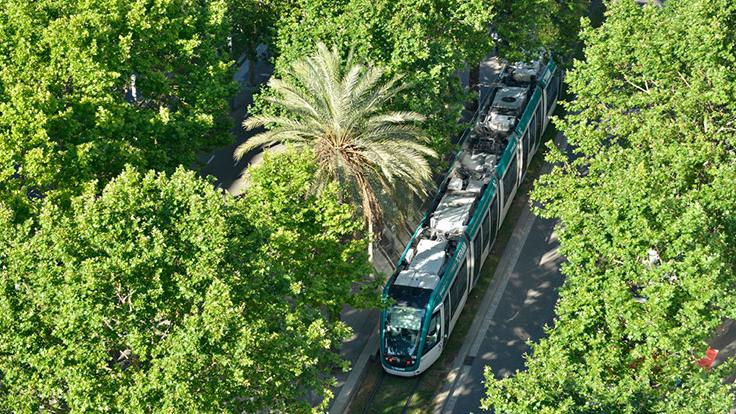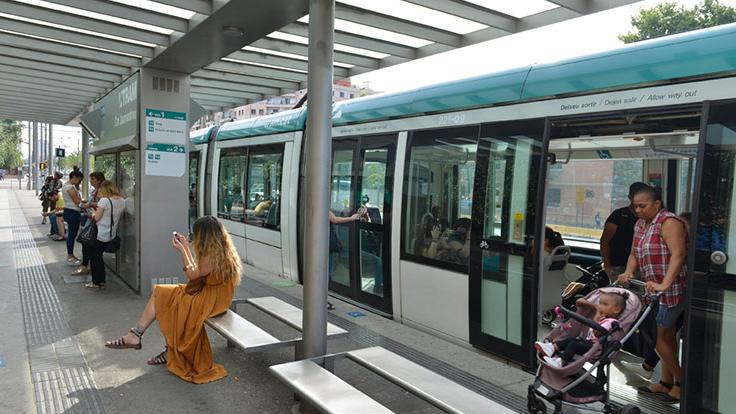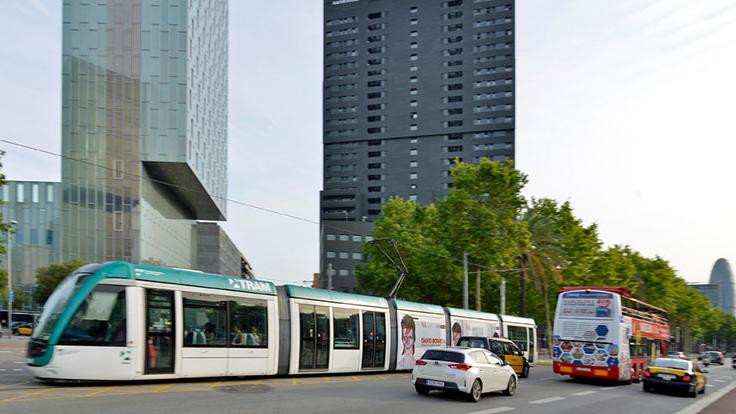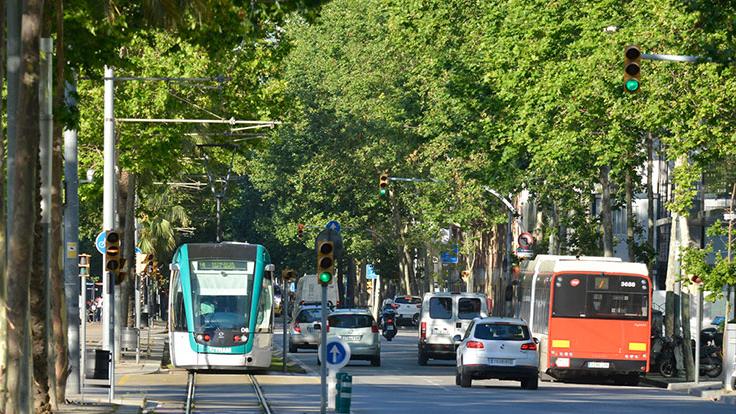The award of this project to Tramvia Metropolità in 2000 marked the start of work that would end in 2004 with the return of the tram to Barcelona and six more municipalities: L’Hospitalet, Esplugues, Sant Joan Despí, Cornellà, Sant Just Desvern and Sant Feliu del Llobregat.
The Trambesòs started running the same year, connecting the municipalities of Badalona and Sant Adrià del Besòs with Vila Olímpica, passing through Plaça de les Glòries Catalanes.
Both lines have led to major urban-improvement initiatives that have resulted in a spectacular change in the quality of the space. It is an added value of the new tramway which, obviously, constitutes a powerful public transport system, capable of providing an excellent service to millions of passengers every year.
The tram connection in Barcelona
The future connection between the two tram lines on Diagonal solves the current dysfunctional problem: an unconnected tram network. It will also mean that the service will cover a greater part of the urban and metropolitan areas.
The unification of the tram network will improve links between various city districts and also make it possible to connect Barcelona with the eight surrounding municipalities (Hospitalet de Llobregat, Esplugues de Llobregat, Cornellà de Llobregat, Sant Joan Despí, Sant Just Desvern, Sant Feliu de Llobregat, Sant Adrià de Besòs and Badalona).
This is why it is one of the key factors for enhancing the public transport system, as well as combating the air and noise pollution caused by an excessive use of private motor vehicles in the city.
Moreover, the urban model resulting from the improved tram service is a healthier one, as fewer cars will lead not only to a direct reduction in air and noise pollution, but also to greater road safety.
The new tram link is therefore an opportunity to redesign the city and implement a model based on sustainable mobility, which prioritises pedestrians, bicycles, and public transport, with the aim of building a healthier, more equitable and sustainable city for everyone.






